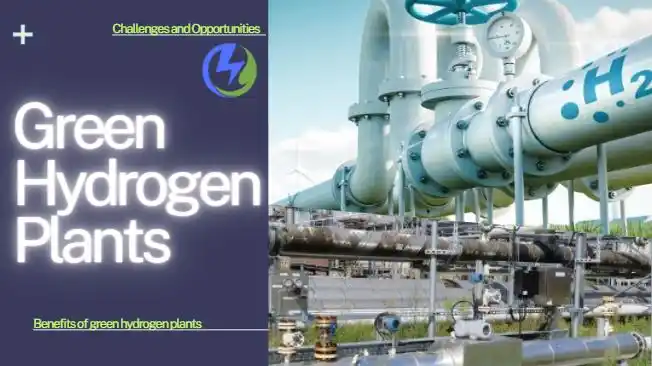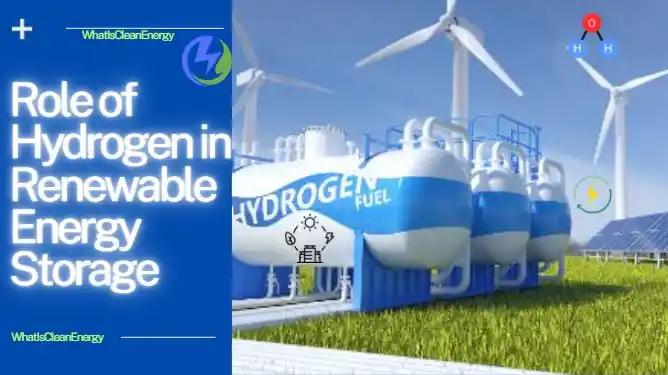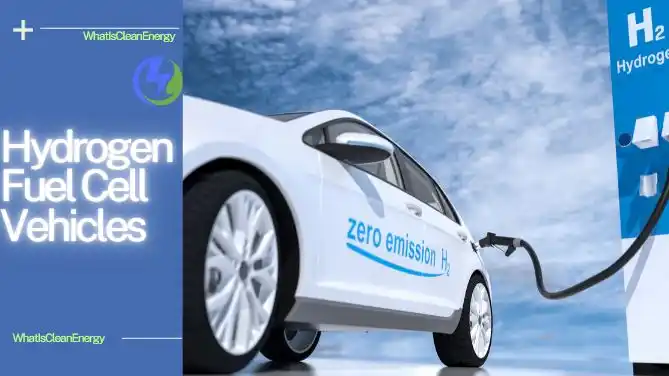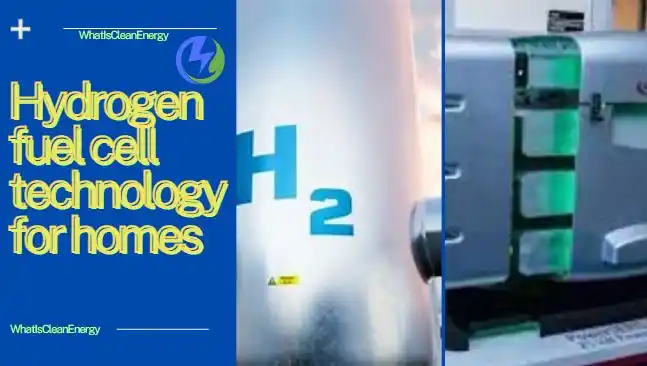Hydrogen is a versatile and abundant element that can be used as a fuel or a feedstock for various industrial processes. However, most of the hydrogen produced today comes from fossil fuels, such as natural gas and coal, which emit greenhouse gases and contribute to climate change. To achieve a sustainable and low-carbon future, we need to produce hydrogen in a clean and renewable way. This is where green hydrogen plants come in.
What is green hydrogen?
Green hydrogen is hydrogen that is produced by using renewable electricity to split water into hydrogen and oxygen. This process, called electrolysis, does not produce any carbon emissions or pollutants. Renewable electricity can come from sources such as wind, solar, hydro, or geothermal power. Users can store, transport, and apply green hydrogen in various applications.
- Power generation: Burned in turbines or fuel cells, green hydrogen can generate electricity, either on-site or in the grid.
- Transportation: Green hydrogen can fuel vehicles like cars, buses, trucks, trains, ships, and planes. They can use hydrogen fuel cells or engines.
- Industry: Green hydrogen can make ammonia, methanol, steel, and other products. They usually need fossil-based hydrogen.
- Heating: Green hydrogen can be blended with natural gas or biogas to reduce the carbon intensity of heating buildings and homes.
What are the benefits of green hydrogen plants?
Green hydrogen plants offer several benefits for the environment, the economy, and the society, such as:
- Reducing emissions and pollution: Green hydrogen plants can make sectors cleaner, such as industry and transportation. They can avoid the emissions from fossil-based hydrogen.
- Enhancing energy security and diversity: Green hydrogen plants can use less imported fossil fuels and more local renewable resources. They are plentiful and widespread.
- Creating jobs and growth: Green hydrogen plants can boost renewable energy and hydrogen sectors. They can create new jobs and economic opportunities.
What are the challenges and opportunities for green hydrogen plants?
Green hydrogen plants face some challenges and opportunities in terms of technology, cost, and policy, such as:
- Technology: Green hydrogen plants need good and lasting electrolysers. They can work in different sizes and situations. They can also use renewable power sources. It needs safe and reliable ways to store and move hydrogen. They need devices and applications that can use hydrogen.
- Cost: Green hydrogen plants need to lower the costs of electrolysers and other parts. They need to gain advantages from scale and learning. It needs to compete with cheap fossil-based hydrogen and fuels. They do not include their environmental and social costs.
- Policy: Green hydrogen plants need helpful and consistent policies and rules. They need a fair and stable market for green hydrogen. They need to follow the national and global targets and promises for climate action and sustainable development.
What is the current status of green hydrogen plants around the world?
Green hydrogen plants are facilities that produce hydrogen from water using renewable electricity. Green hydrogen plants offer a clean and sustainable method for producing and utilizing hydrogen. They find application across various sectors, including power generation, transportation, industry, and heating.
According to the International Energy Agency (IEA), there were more than 200 green hydrogen projects announced or under development worldwide as of 20221. The IEA also reported that global hydrogen production reached 70 million tonnes in 2021, of which only 0.1% was green hydrogen. However, the IEA expects that green hydrogen production will increase significantly in the coming years, as more countries and companies adopt hydrogen strategies and invest in hydrogen technologies.
The region with the most green hydrogen projects is Europe, with 261 projects announced or under development as of 2021. Some of the leading countries in Europe are Germany, Spain, the Netherlands, and the United Kingdom, which have ambitious plans and policies to support green hydrogen development and deployment2. Other regions with significant green hydrogen activity are Asia-Pacific, North America, and Latin America. Some of the countries with the largest number of green hydrogen plants are Australia, China, Chile, and the United States3.
Green Hydrogen Plants: Challenges
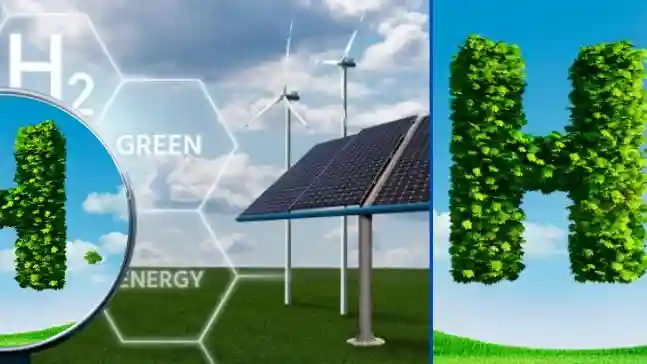
Green hydrogen plants face some challenges and opportunities in terms of technology, cost, and policy. They need efficient and durable electrolysers, reliable and safe infrastructure, and compatible end-user devices and applications. They also need to reduce the costs of production and compete with fossil-based hydrogen and other fuels. Green hydrogen plants need supportive and coherent policies and regulations that create a level playing field and a stable market for green hydrogen. They also need to align with national and international goals and commitments for climate action and sustainable development1.
Green hydrogen plants are a promising solution for producing and using hydrogen in a clean and renewable way. They can offer multiple benefits for the environment, the economy, and society, but they also face some challenges and opportunities in terms of technology, cost, and policy. To overcome these barriers and unlock the full potential of green hydrogen plants, we need to foster collaboration and innovation among all the stakeholders and accelerate the deployment and scale-up of green hydrogen plants around the world.
What are the current production costs for green hydrogen versus fossil fuel-based hydrogen?
Green hydrogen is made from water and renewable power. Fossil fuels make hydrogen from gas or coal. Green hydrogen is more expensive than fossil hydrogen now. But green hydrogen can become cheaper in the future. The cost depends on many factors, such as:
- The price of renewable power
- The efficiency of electrolysers
- The scale of production
- The policies and regulations
- The environmental and social impacts
According to some sources45, the current cost of green hydrogen is around $2-5 per kg. The current cost of fossil hydrogen is around $1-3 per kg. By 2030, the cost of green hydrogen could drop to $2-3 per kg. The cost of fossil hydrogen could increase to $2-4 per kg. This is because of the expected changes in the factors mentioned above. Green hydrogen could become cheaper than fossil hydrogen by 2030.
What successful policies and rules have supported the growth of green hydrogen plants?
Some examples of good policies and rules are:
- R&D and demonstration support6: This helps to lower the cost of electrolysers and make them better.
- Renewable electricity supply7: This provides the power needed to make green hydrogen from water.
- Carbon pricing and subsidies reform6: This makes fossil-based hydrogen and fuels more expensive and less attractive.
- International standardisation and infrastructure67: This reduces uncertainty and makes it easier to store and move hydrogen.
- Blue hydrogen as a short-term option6: This helps to prepare for the transition to green hydrogen.
What are some specific examples of successful green hydrogen plants?
Some specific examples of successful green hydrogen plants are:
- Puertollano Green Hydrogen Plant: This is a 20 MW electrolyser plant in Spain that uses solar power to produce green hydrogen. It is the largest green hydrogen plant in Europe and it supplies hydrogen to a nearby fertilizer factory.
- Hydrogen Energy Supply Chain: This is a pilot project in Australia and Japan that uses brown coal to produce hydrogen and then captures and stores the carbon emissions. It is the world’s first liquefied hydrogen carrier ship, and it transports hydrogen from Australia to Japan.
- Neom: This is a planned mega-city in Saudi Arabia that aims to produce 650 tons of green hydrogen per day using 4 GW of wind and solar power. It is the world’s largest green hydrogen project, and it will export green ammonia to global markets.
Conclusion
Green hydrogen plants are a good way to make and use hydrogen cleanly and renewably. They can help many sectors in the energy transition and the net-zero emissions economy. Green hydrogen plants can have many benefits for the environment, the economy, and society. But they also have some challenges and opportunities in technology, cost, and policy. We need to work together and innovate to solve these problems and use the full potential of green hydrogen plants. We need to speed up the building and growing of green hydrogen plants around the world.

